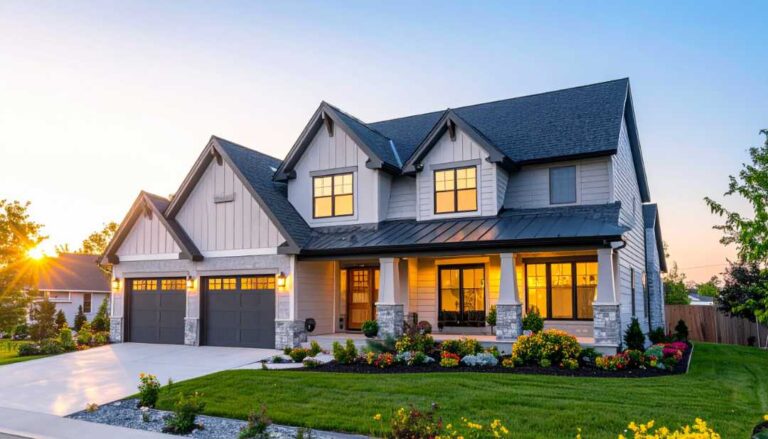The wind howls, the rain lashes down, and then you see it: a telltale drip from your ceiling, a water stain spreading, or worse, a steady stream of water. Discovering a roof leaking after an Illinois storm can send a jolt of panic through any homeowner. Your immediate thought might be, “Is this an emergency, and what do I do RIGHT NOW?”
At Seidel Exterior Group, we understand the urgency and anxiety that come with a post-storm roof leak. As your local Illinois roofing experts, we’ve guided countless homeowners through these stressful situations. While every leak requires professional attention, some demand immediate action to prevent catastrophic damage or ensure your family’s safety.
This 3-minute safety checklist is designed to help you quickly assess the severity of your roof leak, prioritize immediate actions, and know when to make that critical call to a professional roofing company like ours.
Is It an Emergency? Rapid Assessment Criteria for Leaking Roof
Before you do anything else, consider these factors to determine the urgency of your leak:
- Volume of Water:
- Drip, drip, drip: A slow, consistent drip suggests water is making its way through. While not an immediate collapse risk, it indicates a breach that needs prompt attention to prevent long-term damage.
- Steady stream or gush: This is a serious emergency. A significant volume of water entering your home means a large breach or a severely compromised section of your roof. This demands immediate containment and professional intervention.
- Location of the Leak:
- Near electrical fixtures (lights, outlets, ceiling fans): THIS IS AN IMMEDIATE ELECTRICAL HAZARD! Water and electricity are a dangerous combination.
- Near structural elements (load-bearing walls, main beams): Water compromising these areas can lead to structural instability over time, or even sudden collapse in severe cases.
- In living spaces (bedrooms, living rooms): While not always structural emergencies, leaks here can quickly damage furniture, electronics, flooring, and personal belongings.
- In the attic/unoccupied spaces: While still serious and requiring repair, these leaks give you a bit more time to react compared to those directly over electrical or living areas.
- Bulging Ceilings/Walls:
- If you see your ceiling or a wall bulging or sagging, it means water is pooling and putting immense pressure on the material. This is a strong indicator of an impending collapse and requires extreme caution.
- Storm Still Raging:
- If the storm is still active with high winds, lightning, or heavy rain, your priority is safety. Do not attempt to go onto the roof. Focus on interior containment.
Your 3-Minute Safety Checklist: What to Do RIGHT NOW with a roof leaking
Once you’ve assessed the situation, follow these steps to protect your home and family:
Step 1: Prioritize Safety (0-30 seconds)
- Electrical Hazards: If the leak is near any electrical outlets, light fixtures, or major appliances, IMMEDIATELY turn off the power to that area (or the entire house if unsure) at your main circuit breaker. This is paramount to prevent electrocution or electrical fires.
- Avoid Contact: Do NOT touch or walk near sagging ceilings or walls. There’s a risk of collapse.
- Clear the Area: Move furniture, electronics, valuables, and anything else susceptible to water damage away from the leak path. If items are too heavy to move, cover them with plastic sheeting.
Step 2: Contain the Leak (30 seconds – 2 minutes)
- Grab Containers: Place buckets, large pots, trash cans, or any available containers directly under the leak to catch the dripping water.
- Protect the Floor: Lay down old towels, tarps, or plastic sheeting around and under your containers to protect flooring from splashes and overflow.
- Relieve Ceiling Pressure (CAUTION ADVISED): If your ceiling is visibly bulging with pooled water, carefully and safely poke a small hole in the center of the bulge using a screwdriver or awl. Place a large bucket directly underneath. This allows the water to drain in a controlled manner, preventing a larger, more destructive ceiling collapse. Only attempt this if you are absolutely sure it is water and not a gas line or electrical conduit. If unsure, wait for a professional.
Step 3: Document the Damage (2 minutes – 3 minutes & Ongoing)
- Photos and Videos: Use your smartphone to take clear photos and videos of the leak, the water damage inside your home, and any damaged belongings. Capture wide shots and close-ups. This documentation is crucial for your insurance claim.
- Note the Time: Make a mental (or quick written) note of when the leak started and any visible changes over time.
What Comes Next? Beyond the Emergency Checklist
Once you’ve completed your 3-minute safety checklist and contained the immediate threat, your next actions are vital:
- Do NOT Attempt DIY Roof Repairs (Especially if Unsafe): While temporary fixes (like a tarp) exist, climbing onto a wet, storm-damaged roof is extremely dangerous and best left to professionals. You risk serious injury or causing further damage to your roof. Your priority is interior containment and contacting experts.
- Contact Seidel Exterior Group IMMEDIATELY: For homeowners in Illinois, we are your trusted partners for post-storm roof damage.
- Emergency Service: We offer emergency services to address critical leaks and provide temporary tarping to prevent further damage.
- Expert Inspection: Our certified professionals will safely conduct a thorough inspection of your roof, identifying the source of the leak, assessing all damage (visible and hidden), and evaluating the overall integrity of your roofing system.
- Insurance Claim Assistance: We have extensive experience working with insurance companies in Illinois. We’ll help you document the damage, prepare accurate estimates, and advocate on your behalf to ensure you receive the full coverage you deserve for repairs.
- Professional Repair: Our skilled team will perform high-quality, lasting repairs, restoring your roof to its pre-storm condition or better.
- Contact Your Insurance Company: Report the leak and damage as soon as possible. Provide them with the documentation you’ve collected. Let them know you’ve contacted a professional roofing contractor for an assessment and emergency services.
Why Seidel Exterior Group is Your First Call in Illinois
Dealing with a leaking roof after a storm is a high-stress situation. You need a reliable, expert partner who understands the unique challenges of Illinois weather and the intricacies of insurance claims. Seidel Exterior Group provides:
- Rapid Response: We prioritize emergency calls, understanding that time is of the essence when water is entering your home.
- Safety First Approach: We emphasize safety for both our crew and your family. We’ll ensure the area is secure before any work begins.
- Comprehensive Solutions: From emergency tarping to detailed inspections, insurance advocacy, and expert repairs, we handle every aspect of your roof leak problem.
- Local Expertise: As an Illinois-based company, we are familiar with local building codes, common storm patterns, and the specific needs of homes in our community.
Don’t let a roof leak turn into a costly catastrophe. Your quick actions in the first few minutes can significantly mitigate damage, and your decision to call a trusted professional like Seidel Exterior Group will ensure a safe, effective, and lasting solution for your Illinois home.



